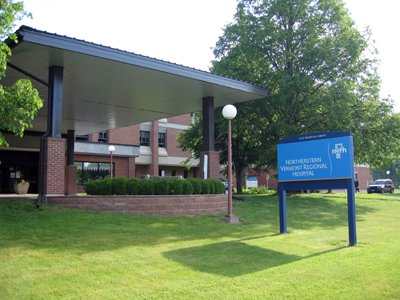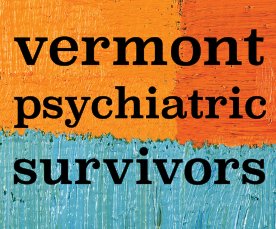Counterpoint Winter 2018 • News • Page 7
MONTPELIER – The University of Vermont Health Network reported in late November that, according to its analysis, between 29 and 35 new psychiatric hospital beds are needed in Vermont. It has determined that these additional beds would prevent patients from being denied care or from having to wait for admissions.
During the public comments that followed the presentation before the Green Mountain Care Board, several people questioned whether the analysis had adequately considered community supports that could prevent hospitalization or enable discharges sooner.
The GMCB is overseeing proposed construction of new inpatient beds located at the Central Vermont Medical Center campus of the UVM network. The network’s executives told the board it is ready to begin the next phase, which is to consider how the programming for the new CVMC capacity will be developed.
Eli Toohey, the executive director of Another Way, asked how the medical center would enhance peer services as a way to reduce the need for hospital stays.
She pointed to a report from the Department of Mental Health last year that said more should be invested in peer respite programs, peer community centers, peer-supported housing, and peer support in emergency departments.
Another Way is a peer-run center in Montpelier.
Julie Tessler from Vermont Care Partners – the organization of community mental health centers – said that more analysis was needed for the broader system of mental health care to explore whether less hospital use was possible.
She gave the example of elderly patients, who sometimes stay for as long as a year in a hospital bed because of the lack of an adequate geriatric program.
“I wouldn’t want to go full throttle ahead” in deciding on the number of new hospital beds without knowing that resources were being invested wisely, Tessler said.
Ken Libertoff, the retired executive director of the Vermont Association for Mental Health, gave strong praise to the GMCB and to the network for their leadership in addressing the issue as a health care system problem, rather than asserting that psychiatric care was too complex, or patients were too acute, and had to be left for the state to address.
He then challenged both about the lack of community services.
Building new inpatient capacity without addressing community support creates “the potential of continued gridlock,” no matter how many beds are built, he said.
The chief executive officer for the network, John Brumsted, MD, told Libertoff that he recognizes the inpatient bed proposal “is just one sliver” of what needs to be done.
“There are many other issues that we need collaboratively to address,” he said.
He said the presentation was to update the board on its analysis of “what the true statewide need is for adult inpatient psychiatry beds” as “one piece of a much bigger set of problems.”
The next phase, he said, will be to determine how much of that need could be met within the project planned for CVMC. The full number of beds needed likely will not be able to be built at that location because of federal rules limiting size, Brumsted said.
Network staff took the board through a slide presentation developed earlier in the fall that showed the steps it took to arrive at the 29-35 bed number. The report said that with those beds added, it was projected that 97 percent of the time there would be no delay for an inpatient bed when needed.
Data staff gathered detailed information from emergency room and admissions records at the UVM Medical Center in Burlington and CVMC in Berlin, which are both network members.
They then gathered broader information from the other two general hospitals that have psychiatric units (Rutland Regional Medical Center and the Windham Center at Springfield Hospital) and from the two freestanding hospitals (the state-run Vermont Psychiatric Care Hospital in Berlin and the Brattleboro Retreat) as well as from emergency rooms around the state.
The first number set was termed “beds to reduce days,” which assessed how many days people had waited in emergency rooms before being admitted, and how many added beds would prevent those delays. That estimate was five to nine beds.
They then looked at “beds for unmet need,” which was for patients who came to the emergency room and met criteria for admission but stabilized and were discharged before a bed became available.
According to the presentation, the review of records showed that, overall, people in the emergency room for less than 12 hours had not needed admission, so they were not included in the count. On the other hand, a majority of those who waited more than 28 hours had met criteria for admission, so those patients were counted as having an unmet need.
Among all those who waited between 12 and 28 hours before being discharged, one in five would have been admitted if a bed were available, the assessment concluded.
Putting those counts together, they estimated an additional 18-20 beds were required for the “unmet need” category.
The data staff then used national experts regarding future trends, which project a 4 percent increase in hospitalizations over the next 10 years, which would equal another six beds.
The report noted that there were many people who waited for hours or days in the emergency room who were not assessed to need admission, and those waits would not change through the addition of hospital beds.
It estimated that the new beds would reduce the number of people in a mental health crisis waiting for care in emergency rooms around the state by about 55 percent.
All of the analysis for the number of additional beds assumed that nothing would change within the current system, UVM executives said. It did not look at whether need could be reduced if new community programs were developed, or whether need would increase if the expected loss of federal funding occurs for current hospital beds at the Retreat and VPCH, they said. The state has been told that an exemption is being phased out that allows them to receive funds despite being unattached to a medical hospital.
Brumsted said he believed the number that was identified was very conservative, even with future steps to help decrease hospital use.
“We think there are things we can do much better,” he said, but “I doubt that we will get below that number.”
Report Says Up to 35 Hospital Beds Needed to Prevent ED Waits
by Vermont Psychiatric Survivors | Dec 18, 2018 | Counterpoint, news

